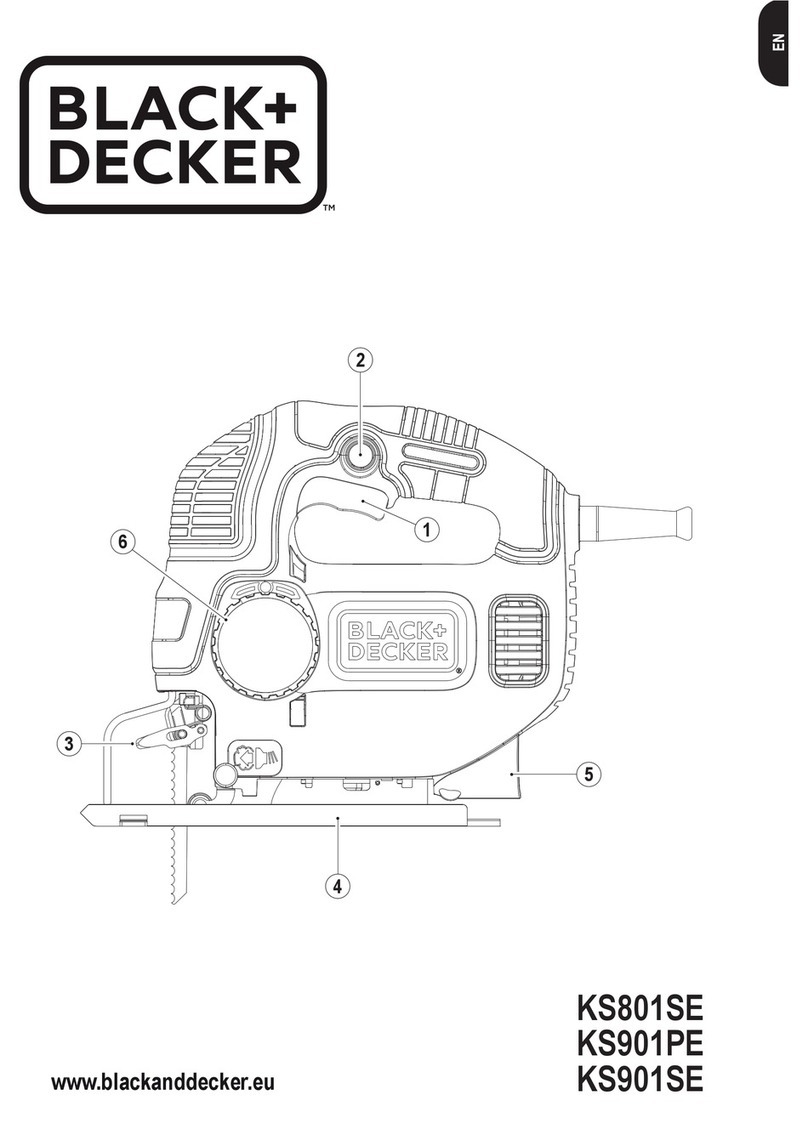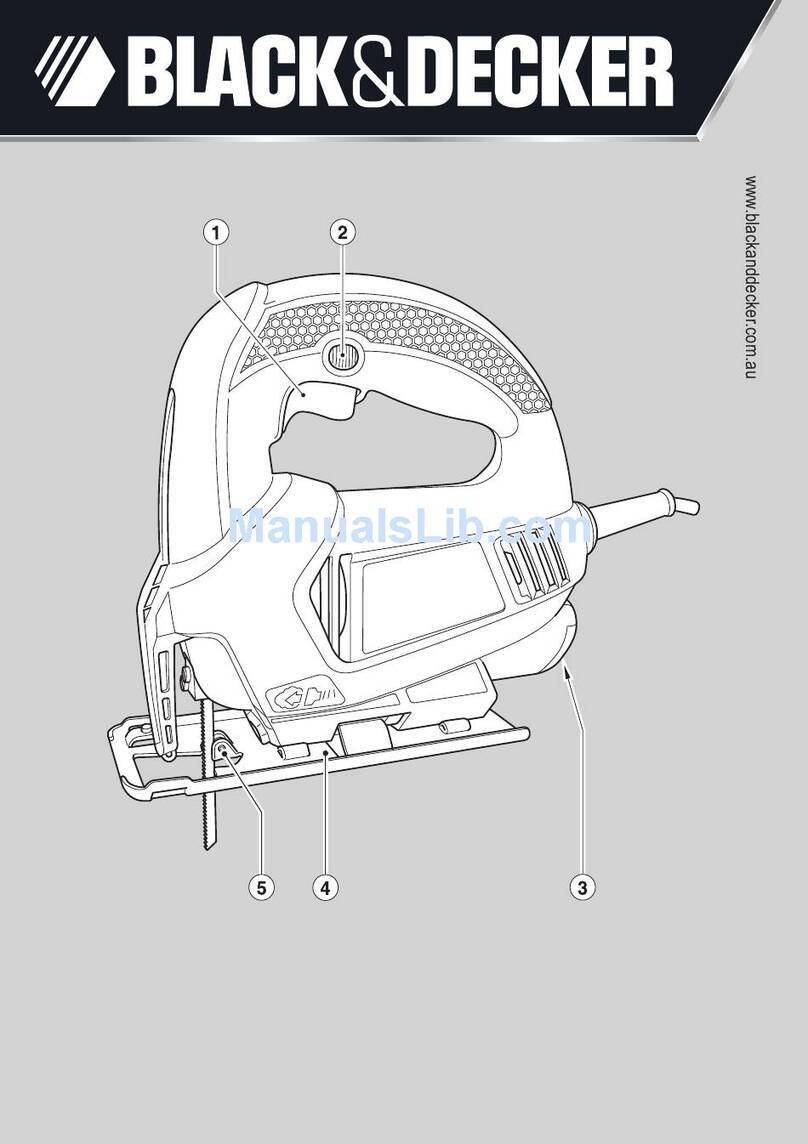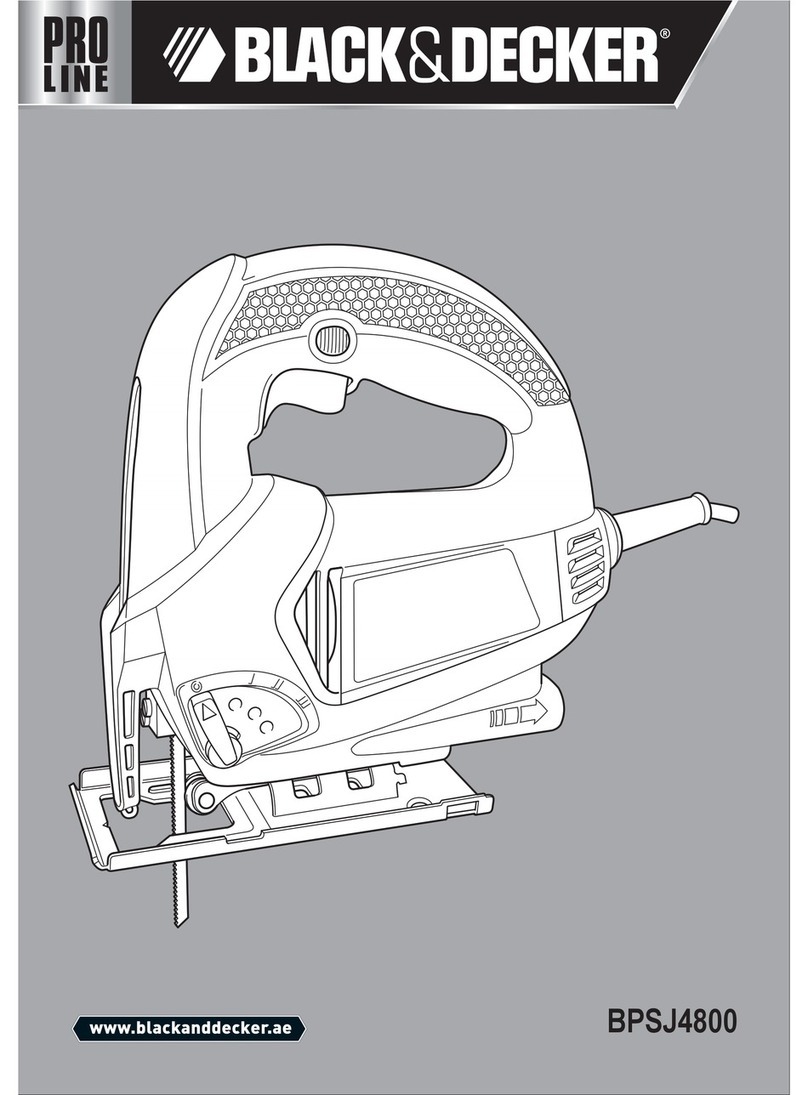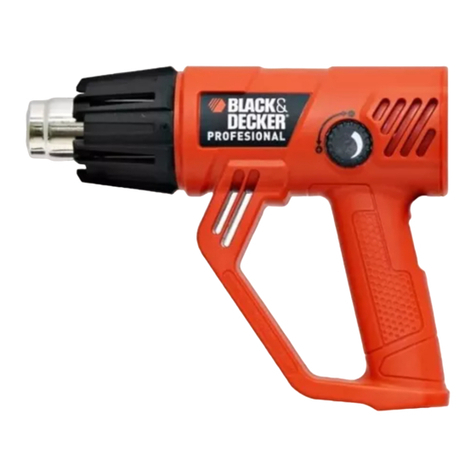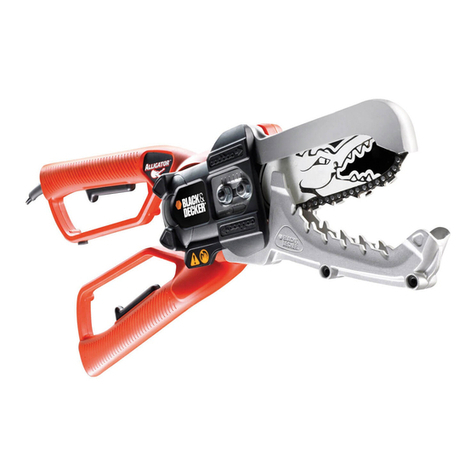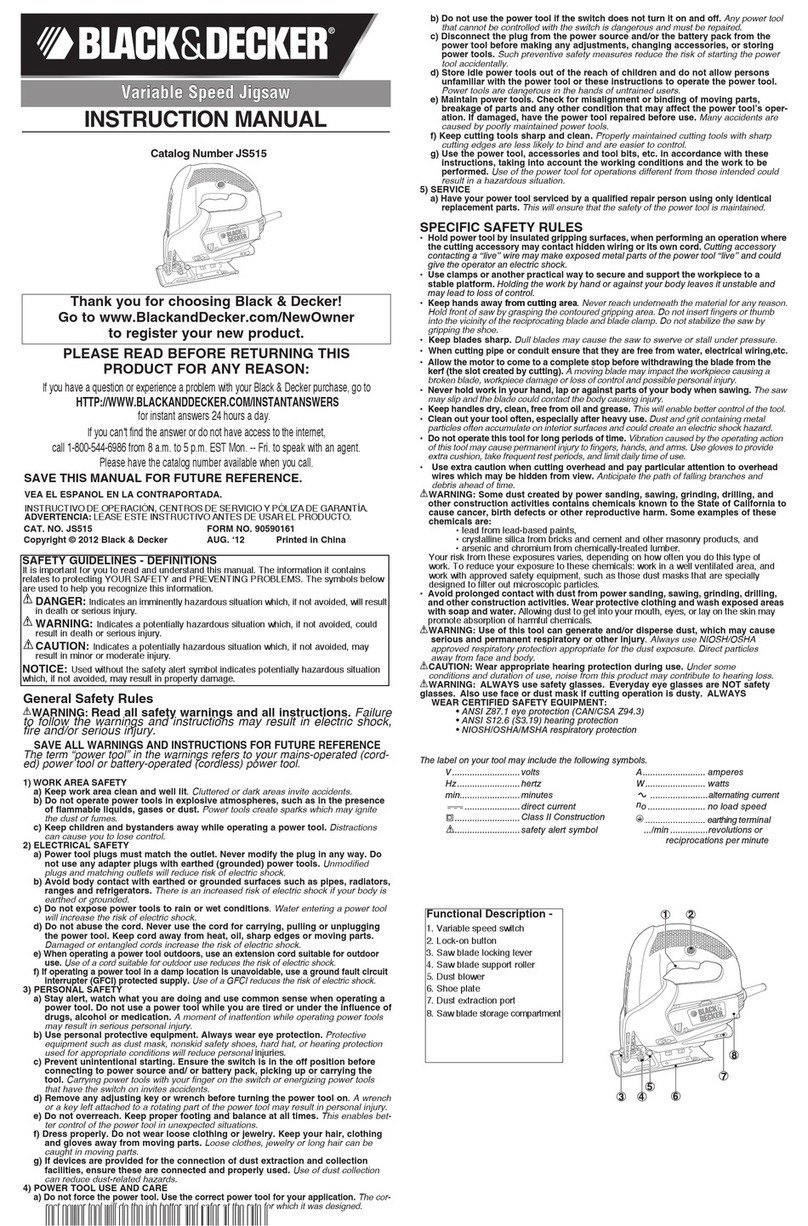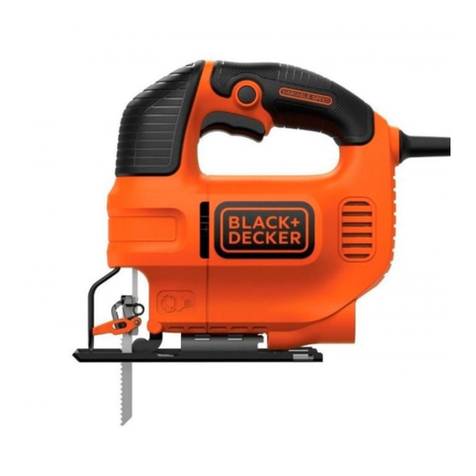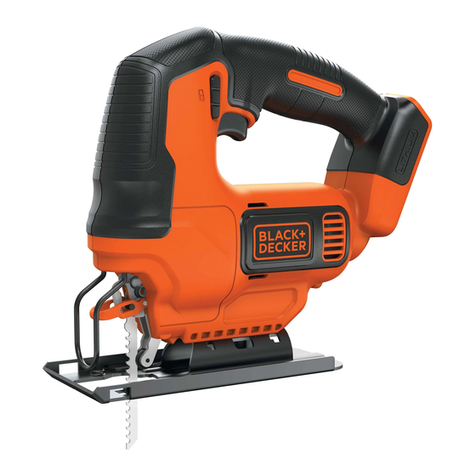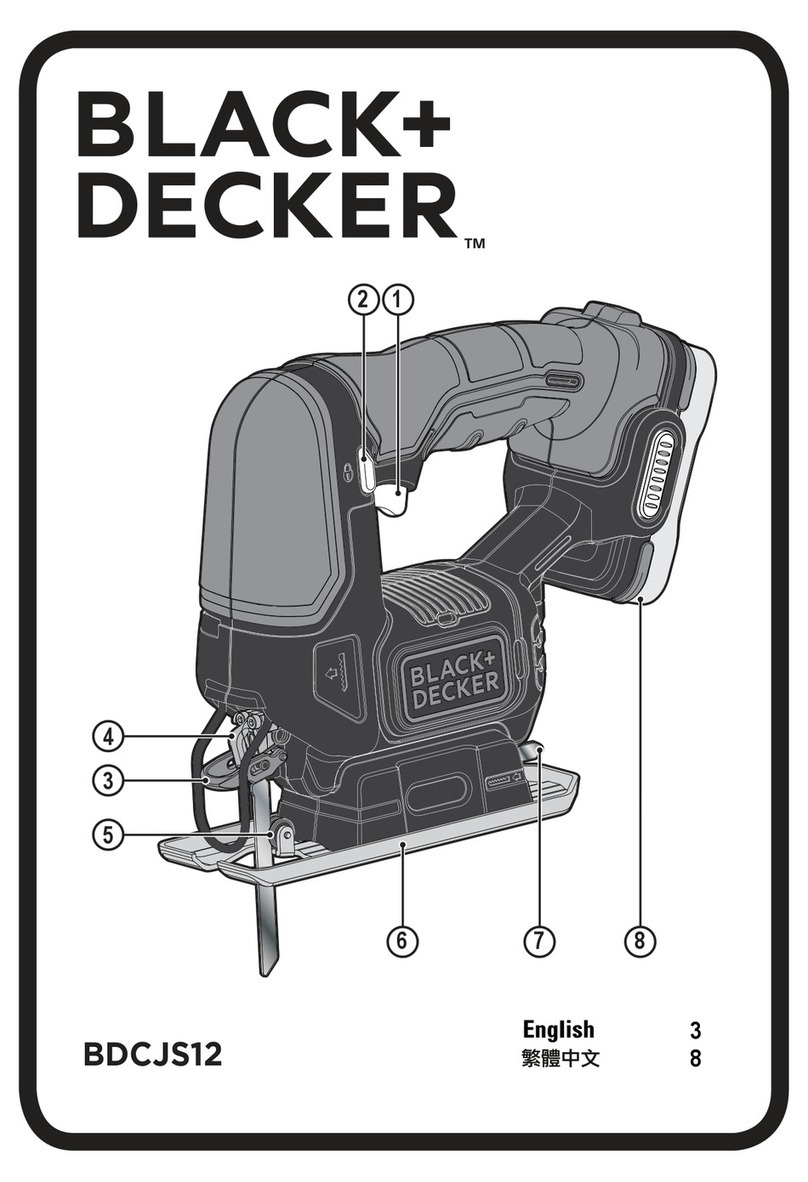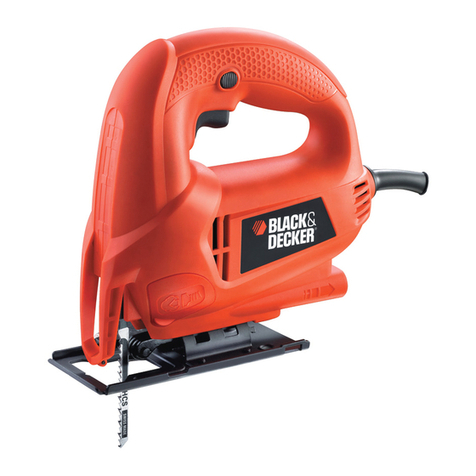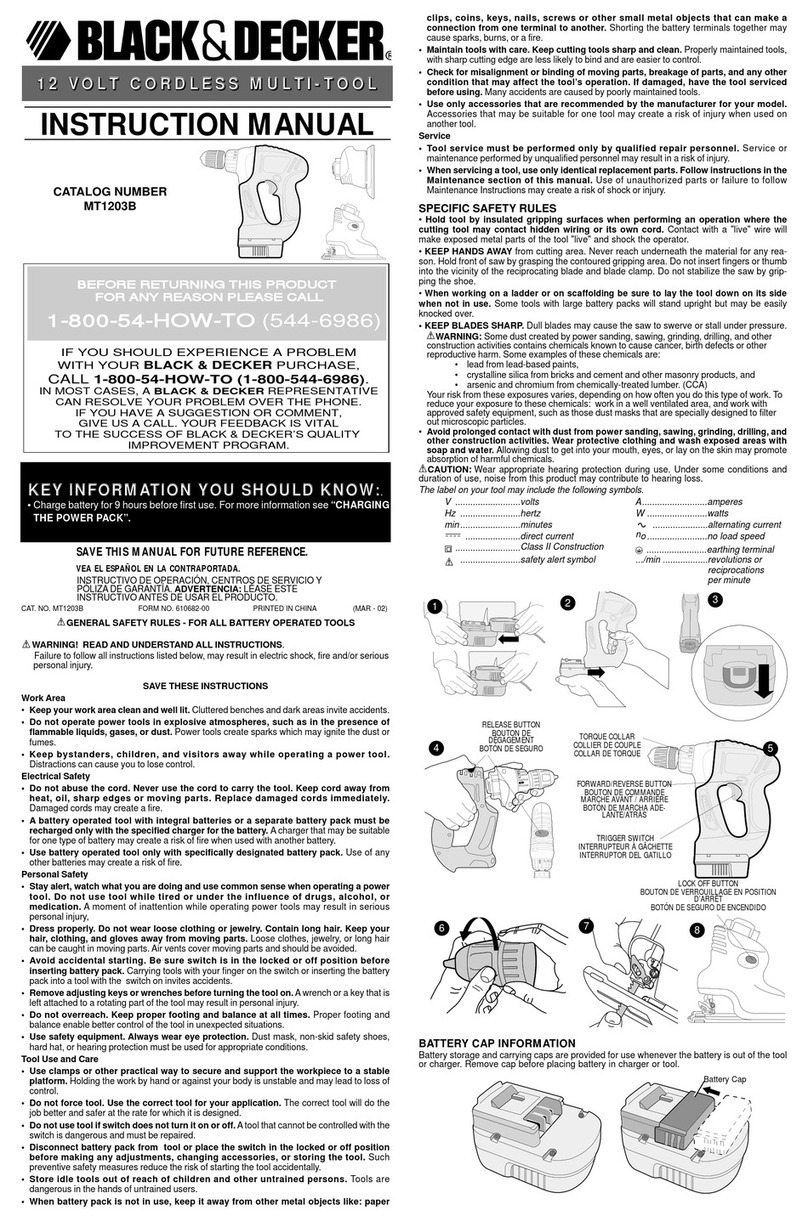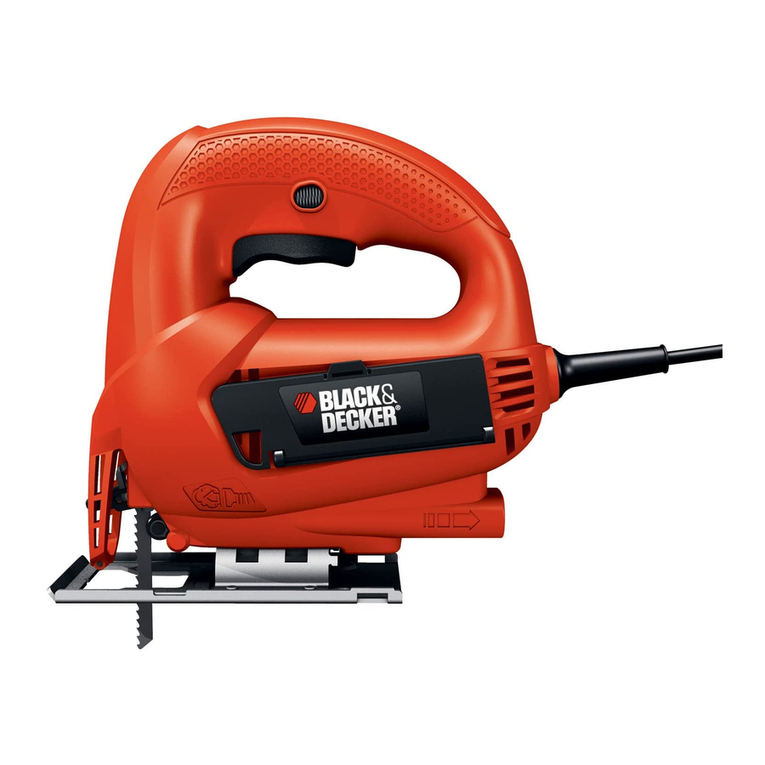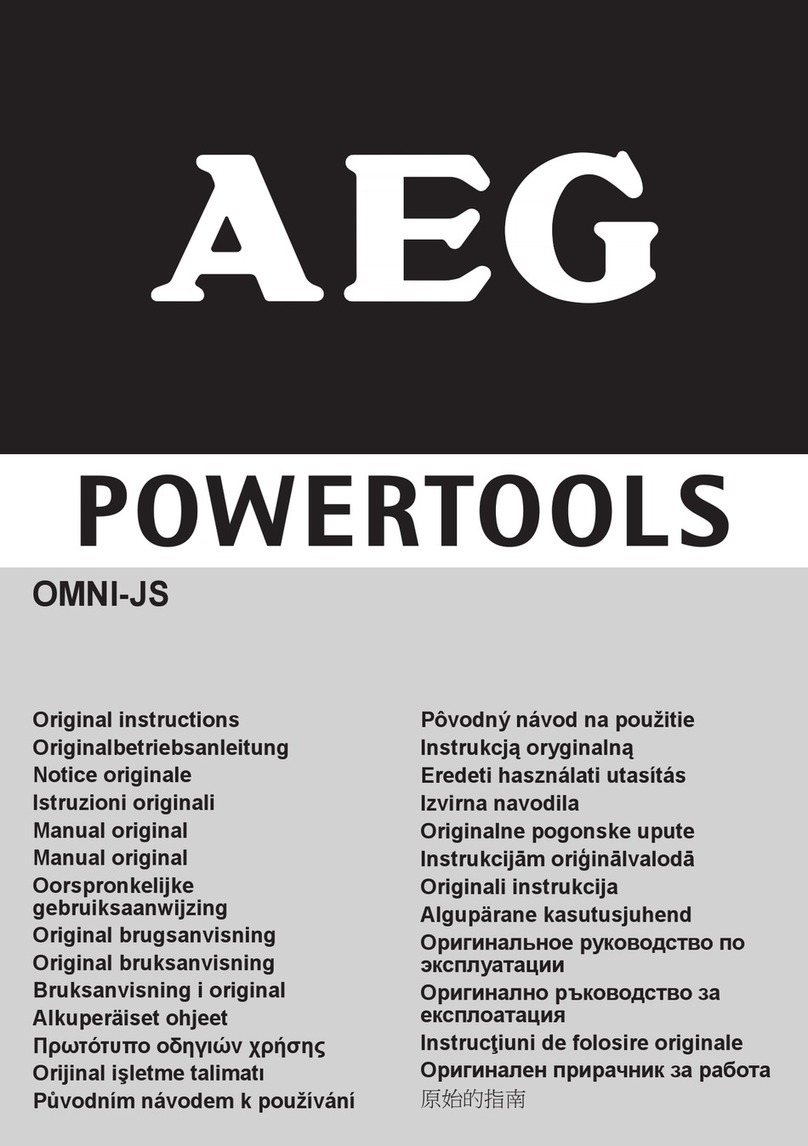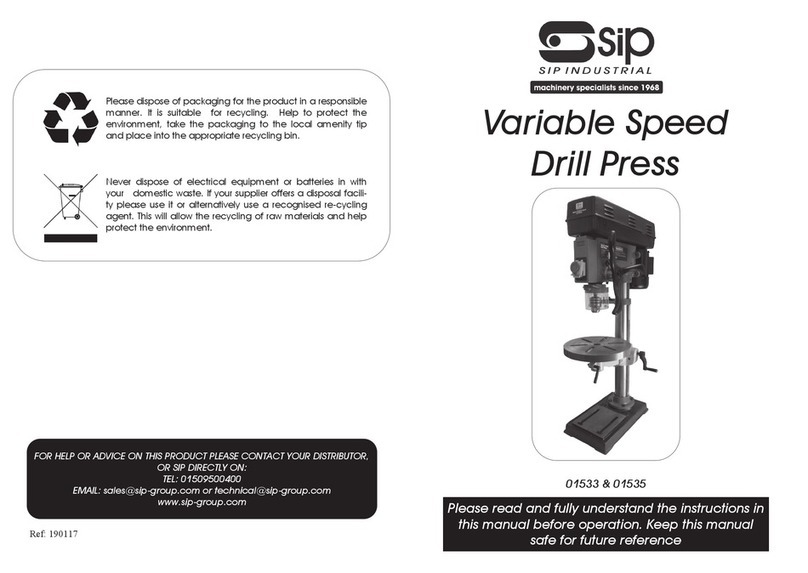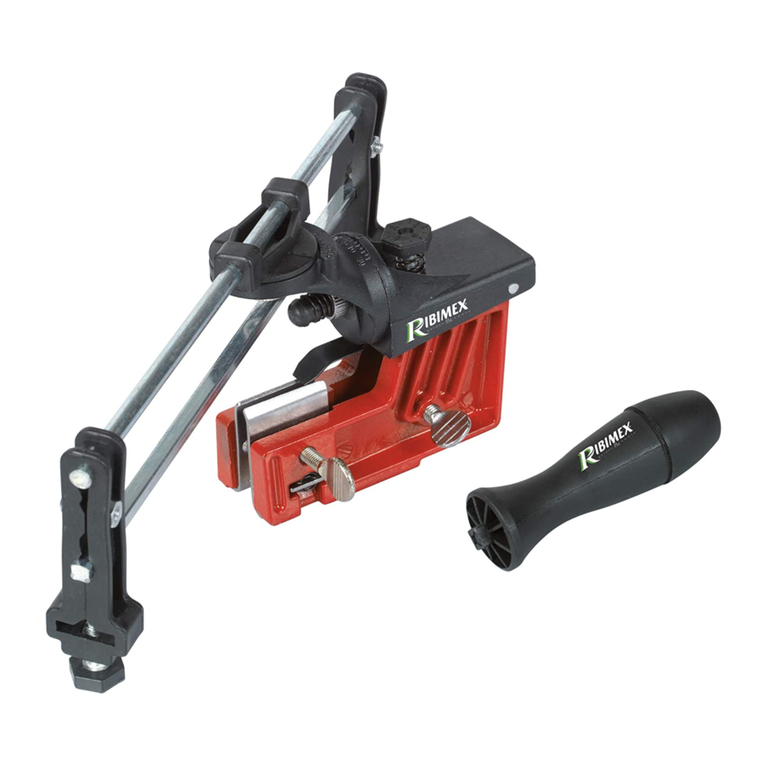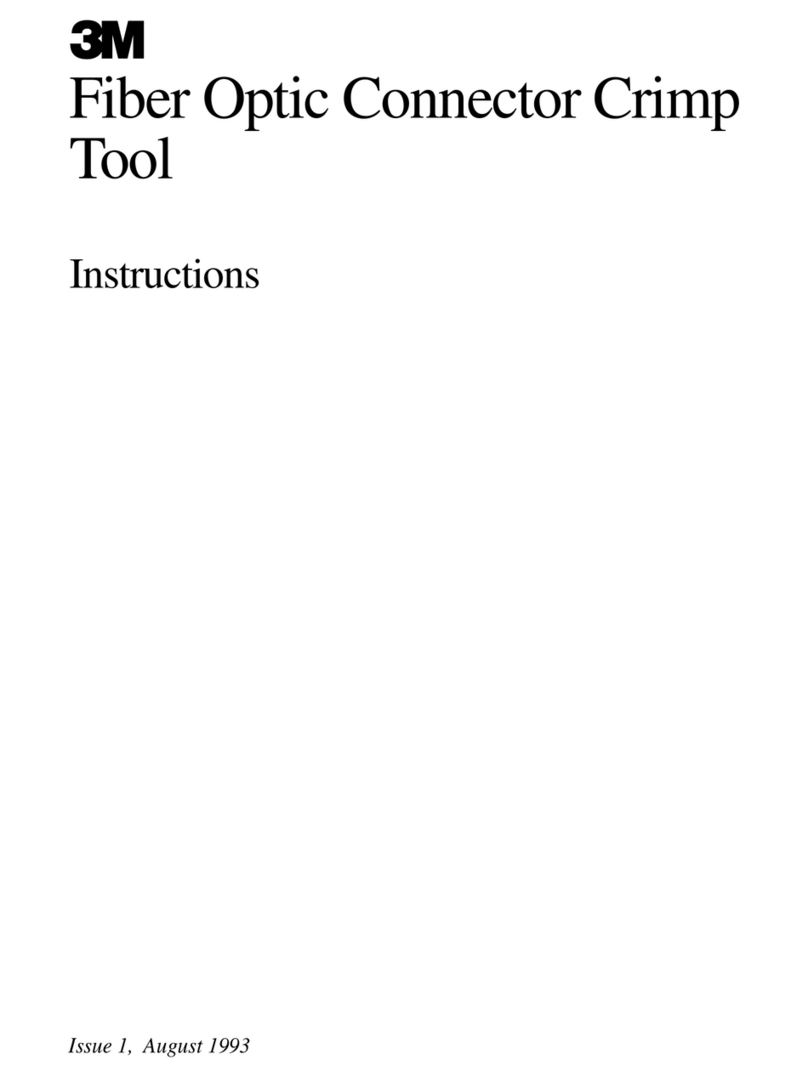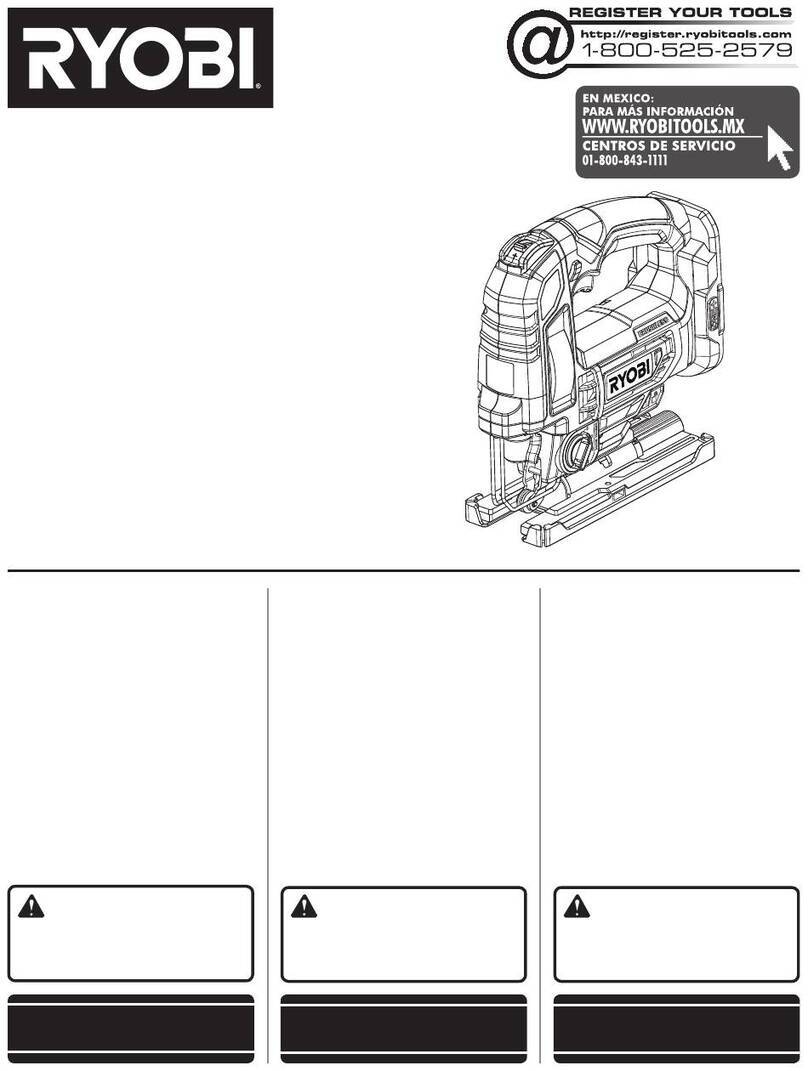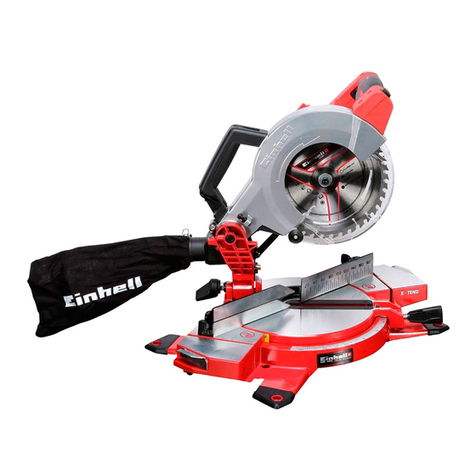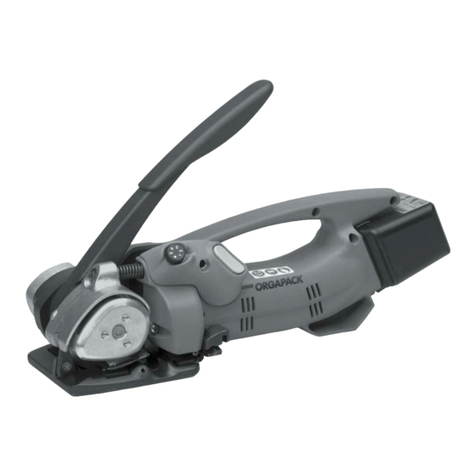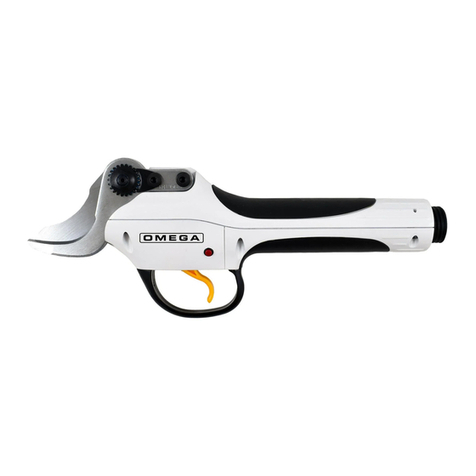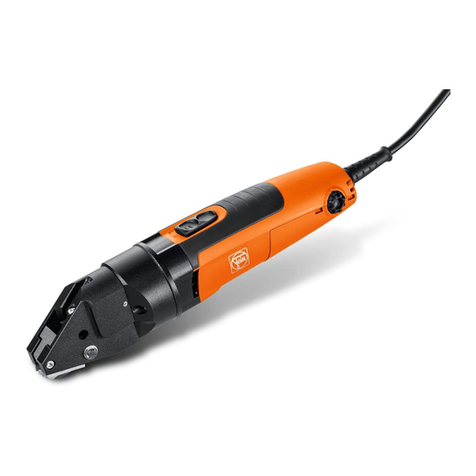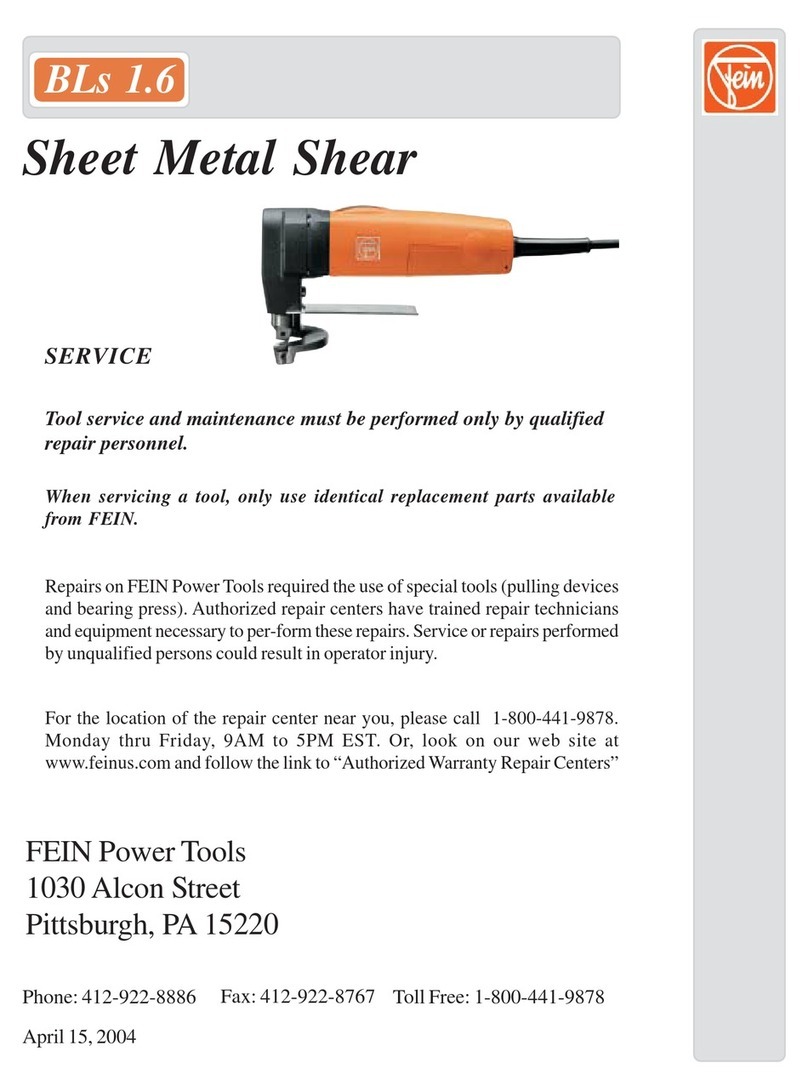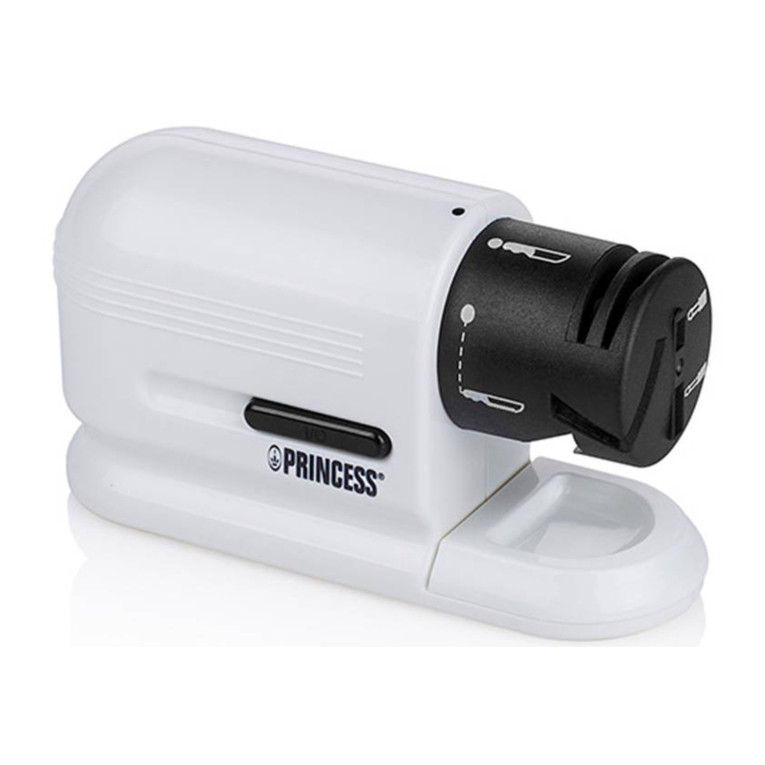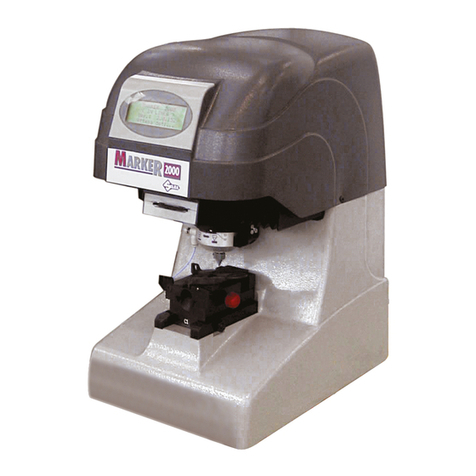
ENGLISH
4
Additional Safety Rules for Heat Guns
• Remember that hidden areas such as those behind walls,
ceilings, floors, soffit boards and other panels may contain
flammable materials that could be accidentally ignited
when stripping paint from the panel. Such a fire would
not be readily apparent, and could cause considerable
damage and danger of injury. These heat guns are
capable of producing temperatures in excess of 1000° F
(538°C).
• Do not use this tool as a hairdryer.
• Allow the tool to cool before storing. Do not lay the heat
gun on flammable surfaces when operating the gun or
immediately after shutting it off. Always set the gun on a
flat level surface so that the nozzle tip is pointedupward.
• Always use good quality scrapers and strippingknives.
• Never obstruct the air intake or nozzleoutlet.
• Be sure to direct the hot air blast in a safe direction; away
from other people or flammableobjects.
• Keep fingers away from metal nozzle; it becomes very hot.
• Don’t touch the nozzle to any surface while running or
shortly after running.
• Avoid poking anything down inside thenozzle.
• Know your work environment. Remember that areas
behind soffit board, ceilings, and floors may contain
highly flammable materials. Check these areas before
applyingheat.
• Clean dry paint from the nozzle after use; it couldignite.
• Clean your scraper blade frequently during use; it
couldignite.
• Do not use the heat gun in combination with
chemicalstrippers.
• Do not use accessory nozzles asscrapers.
• Keep nozzle away fromcord.
• Do not use to cook or warmfood.
• Be constantly aware that this tool can ignite flammable
materials, and soften or melt others. Regardless of the
task you are performing, shield or keep away from these
materials that are close to the workarea.
You may occasionally notice some slight smoking of the tool
after it is turned off. This is the result of heating the residual
oil that was deposited on the heating element during the
manufacturingprocess.
Important Notice
In order for this tool to be an effective paint stripper, it must
produce extremely high temperatures. As a consequence, the
• Have your tool serviced by a qualified repair person
using only identical replacement parts.This will
ensure that the safety of the tool ismaintained.
• Air vents often cover moving parts and should be
avoided. Loose clothes, jewelry or long hair can be
caught in moving parts.You may occasionally notice some
slight smoking of the tool after it is turned off. This is the
result of heating the residual oil that was deposited on the
heating element during the manufacturingprocess.
stripper is capable of igniting paper, wood, paint and varnish
residue and similar materials.
As you become more familiar with the tool and develop the
proper technique, the danger of accidental ignition will be
greatly reduced. In establishing the proper technique, the
best thing to do is practice! Work on simple stripping projects,
preferably outdoors, until you get a “feel” for how to use your
stripper safely andeffectively.
As you practice, observe the following procedures for safety:
• Always be sure the tool is turned off and disconnected
from power supply whenunattended.
• Clean the scraper blade often during use. Built up residue
on the blade is highlyflammable.
• Experiment to find the optimum distance from the tool’s
nozzle to the surface being stripped. This distance [(usually
1-2 inches)(25-50 mm)] will vary depending on the
material beingremoved.
• Keep the heat gun moving ahead of the scraper blade at
alltimes.
• As you work, clean up loose pieces of paint as they
accumulate around the workarea.
• When working indoors, keep away from curtains, papers,
upholstery and similar flammablematerials.
• Above all, remember that this is a serious power tool
that is capable of producing excellent results when
used properly. Practice on simple projects until you feel
comfortable with your stripper. Only then will you have
mastered the proper technique.
WARNING: Extreme care should be taken when
stripping paint. The peelings, residue and vapors of
paint may contain lead, which is poisonous. Any
pre-1977 paint may contain lead and paint applied
to homes prior to 1950 is likely to contain lead. Once
deposited on surfaces, hand to mouth contact can
result in the ingestion of lead. Exposures to even low
levels of lead can cause irreversible brain and nervous
system damage; young and unborn children are
particularlyvulnerable.
Before beginning any paint removal process you should
determine whether the paint you are removing contains
lead. This can be done by your local health department or by
a professional who uses a paint analyzer to check the lead
content of the paint to be removed. LEAD BASED PAINT
should only be removed by a professional and should not be
removed using a heatgun.
Persons removing paint should always follow these guidelines:
• Move the work piece outdoors. If this is not possible, keep
the work area well ventilated. Open the windows and put
an exhaust fan in one of them. Be sure the fan is moving
the air from inside tooutside.
• Remove or cover any carpets, rugs, furniture, cooking
utensils, and airducts.
• Place drop cloths in the work area to catch any paint chips
or peelings. Wear protective clothing such as extra work
shirts, overalls and hats.
• Work in one room at a time. Furnishings should be
removed or placed in the center of the room and covered.




